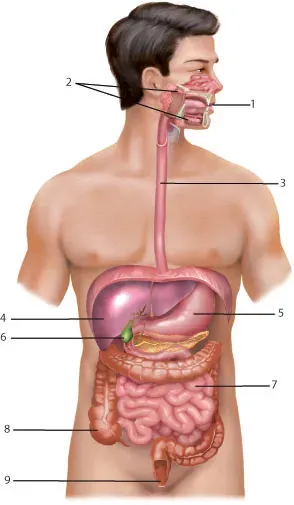Release The Pressure: Yoga Poses To Alleviate Gas Instantly!
Table Of Contents
1. Understanding Gas and Discomfort
2. The Benefits of Yoga for Digestive Health
3. Gentle Stretches to Begin Your Practice
4. Top Yoga Poses for Instant Relief
5. Breathing Techniques to Aid Digestion
6. Daily Routine to Prevent Gas Build-Up
7. Embrace Yoga for Comfort
Understanding Gas and Discomfort

Gas and discomfort can often feel like unwelcome guests at the dinner table, leaving us feeling bloated and uneasy. This everyday occurrence is typically caused by various factors, including poor digestion, specific foods that ferment in the gut, or even stress.
Understanding the root causes behind these symptoms not only helps in mitigating their effects but also empowers us to take proactive steps towards our digestive health. What many don’t realize is that our bodies can build up gas based on emotional states; anxiety and tension can manifest as physical discomfort.
Moreover, the modern diet emphasising processed foods often contributes to gas production. Ingredients high in fiber are essential for healthy digestion but may lead to increased gas if reintroduced too quickly after a period of avoidance. Recognizing this delicate balance invites us to explore how mindful eating practices play a vital role in maintaining a happy gut.

By incorporating gentle yoga poses into our routine, we provide ourselves with tools not only for immediate relief but also for cultivating long-term wellness through intentional movement and breathwork.
The Benefits Of Yoga For Digestive Health
Yoga offers a holistic approach to improving digestive health, often overlooked in traditional discussions. Specific poses can stimulate blood flow to the digestive organs, enhancing their function and promoting effective nutrient absorption.
For instance, seated twists not only encourage gentle massage of the intestines but also help in alleviating bloating by encouraging the release of trapped gas. These movements create space within the abdominal cavity and help relieve tension in the surrounding muscles.
Another key advantage of yoga is its ability to reduce stress and anxiety, which are significant contributors to digestive issues. The mindful breathing employed in various asanas allows for a deeper connection with one’s body, fostering awareness that can bring about relief from discomfort.

Not only does this practice encourage relaxation, but it also helps cultivate a more balanced gut-brain axis, supporting healthier digestion over time. Engaging in these poses regularly can transform not just your physical comfort but also enhance your overall well-being and relationship with food.
Gentle Stretches To Begin Your Practice
Incorporating gentle stretches into your yoga practice can be transformative, especially when it comes to alleviating gas and promoting digestion. Begin in a comfortable seated position, enjoying the stability of the ground beneath you.
With each inhalation, lift your arms overhead; as you exhale, gently lean to one side. This simple side stretch encourages lateral movement in your torso, helping to massage the internal organs and release trapped gas.

Transitioning into a seated forward fold can further enhance this soothing experience. As you slowly bend forward from the hips keeping your back long and chest open you create space for better circulation throughout your digestive tract. Remember to breathe deeply during this posture; with each exhalation, envision any tension or discomfort melting away like ice under the sun.
Lastly, consider incorporating gentle twists while seated. By placing one hand behind you for support and rotating through your spine with every inhale and exhale, you're not just stretching but also stimulating digestion through movement. These stretches not only prepare your body for deeper movements but also foster an environment of relaxation that eases discomfort naturally. Embrace these small yet powerful practices as essential tools in navigating gas relief effortlessly through yoga.
Top Yoga Poses For Instant Relief
Incorporating specific yoga poses into your routine can act as an effective antidote for gas relief, offering not just physical benefits but also a sense of calm and balance. One of the top poses is the Wind-Relieving Pose (Pavanamuktasana), which is designed to gently compress and massage the digestive organs. By lying on your back, hugging one knee at a time towards your chest, you encourage trapped air to be released while simultaneously soothing any cramped sensations in your abdomen.
Another powerful position is the Child’s Pose (Balasana). This resting posture not only stretches the spine and hips but also allows for deep abdominal relaxation. Tucking into yourself creates gentle pressure on your belly, helping move intestinal gas through its channels more effectively.
Lastly, don’t overlook Cat-Cow Stretch (Marjaryasana-Bitilasana); this dynamic flow promotes flexibility while invigorating digestion by alternately arching and rounding the spine a rhythmic movement that sends waves of relief throughout your midsection, encouraging the gas to dissipate with every breath you take. Embracing these positions as both practice and remedy transforms discomfort into harmony within body and mind.
Breathing Techniques To Aid Digestion
Breathing techniques play a pivotal role in enhancing digestion by encouraging the body to relax and optimize oxygen flow. One effective method is the diaphragmatic breath, where you consciously engage your diaphragm while inhaling deeply through your nose, allowing your abdomen to expand.
This not only calms the nervous system but also creates gentle pressure on the abdominal organs, promoting peristalsis—the wave-like movement that propels food through the digestive tract.
Another powerful technique is the “4-7-8” breath. Inhale for four counts, hold for seven and exhale slowly over eight counts. This rhythmic pattern can alleviate tension in your gut caused by stress often a silent contributor to digestive discomfort. By focusing on this intentional breathing pattern, you encourage mindfulness and presence during meals, which can transform eating from a hurried task into an enjoyable ritual that benefits digestion.
Incorporating these breathing exercises before or after meals can also enhance awareness of hunger cues and promote better portion control. So next time you're feeling bloated or uncomfortable after eating, take a moment to breathe intentionally; it might just be the missing link between discomfort and relief!
Daily Routine To Prevent Gas Build-Up
Incorporating mindful eating into your daily routine can significantly reduce gas build-up. Start by savouring each bite; this not only enhances the flavour experience but also encourages thorough chewing, breaking down food more efficiently. Try to eat slowly and focus on your meal without distractions, such as screens or multitasking. This mindfulness helps avoid swallowing excess air and promotes better digestion.
Hydration is another key player in preventing gas production. Aim to drink plenty of water throughout the day, as proper hydration aids digestive processes. Herbal teas, such as ginger or peppermint, can further support this effort by soothing your digestive tract and reducing bloating. Additionally, consider scheduling regular meal times; consistency helps regulate your body's digestive rhythm and minimize unexpected reactions to food.
Finally, don’t underestimate the power of gentle movement after meals taking a brisk walk or practicing light stretching can stimulate digestion and displace any trapped gas before it builds up into discomfort. By adopting these habits into your daily routine, you set a solid foundation for relieving pressure while enhancing overall gut health.
Embrace Yoga For Comfort
By integrating yoga into your daily routine, you open yourself to a world of comfort that transcends mere physical relief. The ancient practice harmonizes the body and mind, helping to alleviate not just gas but broader digestive issues that many people face. As you embrace each pose ritually breathing through discomfort you cultivate a deeper awareness of your body's needs. This mindfulness empowers you to take charge of your health in ways beyond the mat.
Moreover, yoga's holistic approach fosters emotional resilience and reduces stress, which can often exacerbate gastrointestinal woes. The calming effects of deep breathing techniques used throughout classes create a soothing rhythm that encourages relaxation and aids digestion.
By committing to this transformative journey, you're not just addressing immediate discomfort; you're nurturing long-term well-being that resonates with how you feel every day. So roll out your mat with intention and let each pose guide you towards not only alleviating gas but embracing an overall sense of tranquillity and balance in life.
People Also Asked
1. What causes gas and bloating?
Gas and bloating can be caused by various factors, including poor digestion, certain foods, and stress.
2. How can yoga help with gas relief?
Yoga can help relieve gas by stimulating blood flow to digestive organs, reducing stress, and promoting better digestion.
3. What are the best yoga poses for gas relief?
Some of the best yoga poses for gas relief include Wind-Relieving Pose, Child’s Pose, and Cat-Cow Stretch.
4. How often should I practice yoga for digestive health?
Regular practice, ideally daily or a few times a week, can help maintain digestive health.
5. Can breathing techniques help with digestion?
Yes, breathing techniques like diaphragmatic breathing and the "4-7-8" breath can aid digestion and reduce stress.
6. What foods should I avoid to prevent gas?
Avoid processed foods, high-fiber foods introduced too quickly, and foods that ferment in the gut.
7. How does stress affect digestion?
Stress can lead to poor digestion and increased gas production, as anxiety and tension can manifest as physical discomfort.
8. What are the benefits of mindful eating?
Mindful eating helps avoid swallowing excess air, promotes better digestion, and enhances the overall eating experience.
9. How can hydration affect gas production?
Proper hydration aids digestion and can help prevent gas production.
10. What are some natural remedies for gas relief?
Natural remedies include yoga, mindful eating, hydration, herbal teas, and gentle post-meal movements.





